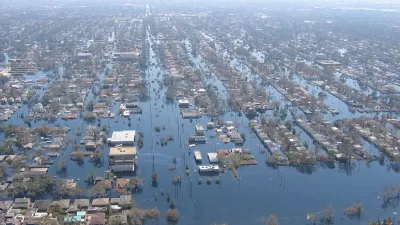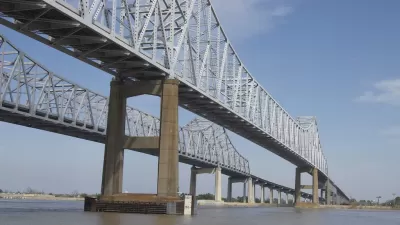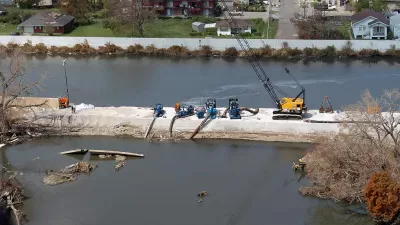By 2100, vast stretches of the Mississippi Delta will be lost to sea level rise, according to a recent study. More than 5,000 square miles could be lost, including much of New Orleans, researchers say.
Conducted by researchers at Louisiana State University, the study says that even with levee improvements and other geological engineering to the Mississippi River, there will not be enough silt delivered to the Gulf Coast region to counteract rising sea levels.
"The boundary conditions appear unforgiving. For instance, all that remains of New Orleans would probably be the French Quarter and the airport. Lake Pontchartrain would lie beneath a vast bay. Along its southernmost reaches, the Mississippi River would remain a river only by virtue of the levees raised to contain it.
The researchers acknowledge that the study is a first cut at putting numbers to the problem. Others are likely to devise more precise estimates. 'But even if we're off by 50 percent, it's still bad,' says Michael Blum, Dr. Roberts's colleague on the work."
FULL STORY: Will much of New Orleans be underwater by 2100?

Study: Maui’s Plan to Convert Vacation Rentals to Long-Term Housing Could Cause Nearly $1 Billion Economic Loss
The plan would reduce visitor accommodation by 25,% resulting in 1,900 jobs lost.

North Texas Transit Leaders Tout Benefits of TOD for Growing Region
At a summit focused on transit-oriented development, policymakers discussed how North Texas’ expanded light rail system can serve as a tool for economic growth.

Why Should We Subsidize Public Transportation?
Many public transit agencies face financial stress due to rising costs, declining fare revenue, and declining subsidies. Transit advocates must provide a strong business case for increasing public transit funding.

How to Make US Trains Faster
Changes to boarding platforms and a switch to electric trains could improve U.S. passenger rail service without the added cost of high-speed rail.

Columbia’s Revitalized ‘Loop’ Is a Hub for Local Entrepreneurs
A focus on small businesses is helping a commercial corridor in Columbia, Missouri thrive.

Invasive Insect Threatens Minnesota’s Ash Forests
The Emerald Ash Borer is a rapidly spreading invasive pest threatening Minnesota’s ash trees, and homeowners are encouraged to plant diverse replacement species, avoid moving ash firewood, and monitor for signs of infestation.
Urban Design for Planners 1: Software Tools
This six-course series explores essential urban design concepts using open source software and equips planners with the tools they need to participate fully in the urban design process.
Planning for Universal Design
Learn the tools for implementing Universal Design in planning regulations.
City of Santa Clarita
Ascent Environmental
Institute for Housing and Urban Development Studies (IHS)
City of Grandview
Harvard GSD Executive Education
Toledo-Lucas County Plan Commissions
Salt Lake City
NYU Wagner Graduate School of Public Service





























